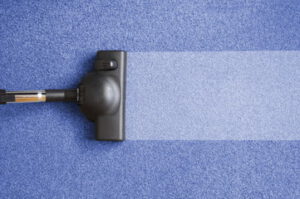
Residential Landscaping Harrisburg PA adds to the beauty of a home and increases its value. It also makes a home more enjoyable and provides health benefits.
Conducting a site evaluation is the first step in designing the landscape. This includes identifying and understanding the environmental conditions, your desires, and design principles.
Keep the rate of growth and mature size of plants in mind when selecting them. This will prevent plants from overwhelming a landscape.
Site Evaluation
Site evaluations are an important first step in a successful residential landscaping design. During the process, the soil consultant observes the lot and its surrounding features to determine whether or not it is suitable for an on-site wastewater disposal system (aka septic system). The first thing that your soil consultant will note upon arrival is the property boundaries and existing buildings. Then, they will examine the land to see where a drainfield can be installed. Generally, low areas like swales or drainage channels, floodplains, deeply filled or disturbed areas, and areas with existing vegetation that is not well-suited for the location are not acceptable for a drainfield location.
The soil consultant will also observe the depth to groundwater or limiting layer, soil texture and composition, and usable space for the septic system. Finally, they will check to see if the septic system can be built in compliance with the Yolo County Code, including setback requirements from water sources and structures, groundwater protection zones, surface water bodies, and environmental sensitive areas.
Many homeowners choose to take on the task of a landscape design and installation on their own. This is usually the least expensive option in the short term, but may cost more in the long run due to poor plant selection and improper installation.
A qualified professional can save you the headache, expense, and frustration of a do-it-yourself project by designing an efficient and affordable yard that will meet your needs. A good designer can create spaces that serve as outdoor rooms, and they will use a theme to guide their decisions.
Once the land has been surveyed, your Qualified Professional will file a Site Evaluation Application with Environmental Health along with the required fee. To expedite the Site Evaluation process, the street address must be posted on the street at all forks of the road and at the site. If not, the site evaluation will be delayed and a re-inspection fee will be charged. To avoid this, a QP must coordinate with the County to have the street number posted and visible from both directions prior to conducting the Site Evaluation.
Design
The design phase of a residential landscape involves creating a plan that combines the natural and man-made elements of your yard into an aesthetic and functional outdoor living space. The design process is an iterative, step-by-step approach that considers your environmental conditions and your needs and desires.
The first step in the design process is to evaluate the site. This includes identifying and marking the property boundaries. It also includes analyzing the soil condition, existing plants, and any unique geological features or environmental concerns of your area.
After evaluating your site, the designer will ask you to make a list of everything you want in your landscape. This will help them determine whether or not your dreams are realistic and if they can be prioritized.
This step is crucial, as it will narrow down the realm of limitless possibilities to find the right solution for your property and its unique challenges. The designer will also work within your budget to ensure that all of the requirements of your project are met.
The next step in the design process is to create a basic diagram of how you will use your landscape space. This is important because it allows you to see how your spaces will work together and how they can be linked together with pathways, seating areas, and other features of the landscape.
You can use a bubble diagram or a rough sketch to lay out how you would like your landscaping to look. It is also helpful to consider the architectural style of your house at this point, so that you can create a harmonious blend between the two.
The final step in the design process is to create drafting and spec sheets that include a description of each feature, color plans, specifications, and details about the construction of your landscape components. These documents will serve as the basis for obtaining costs, obtaining building permits, and providing instructions for construction. This is also the time when the designer will assemble all of the plans and drawings into one comprehensive book, which can be passed on to new stewards of your landscape.
Construction
Whether you’re building your dream home or renovating an existing one, landscaping is a way to enhance the beauty of your property. A well-designed landscape can also increase the value of your home, make it easier to maintain and create more living space. The first step in residential landscaping design is site evaluation. This includes taking inventory of the existing plant materials, existing structures and topographic features of the land. The next step is planning the future landscape. This includes determining what needs to be planted and what the overall theme of the garden will be. This should be based on the lifestyle of the family that will use the garden and any other horticultural requirements such as privacy screening or sun/shade preferences.
Some homeowners decide to do the planning and installation themselves, a process known as DIY landscaping. This option is typically the least expensive in the short run, but it also offers the greatest risk of poor design and improper plant selection and installation.
When designing the landscape, it’s important to think of it as a series of rooms that are linked together by outdoor pathways, steps and walkways. This helps people move through the garden and provides a sense of organizational structure. The defining feature of these rooms is the form theme, which determines their shape and how they are organized (the layout).
Form themes can be determined by the architectural style of the house, or by a specific type of landscape such as a water garden. They can also be based on a personal preference, such as a favorite flower or an interesting landscape material. The best form themes integrate the architecture of the house with the rest of the garden and reflect something about the people who will live there.
During the design phase, it’s important to set a budget and share this with your designer. This will help them design within a range and allow them to provide a detailed proposal for the construction of hardscapes, outdoor living spaces and plants. If the proposal exceeds your budget, you can work with your designer to find ways to reduce the cost of the project without compromising the design or quality of the construction.
Maintenance
Residential landscape design involves creating a plan to organize and improve the natural features on your property. It combines elements of horticulture, art, and architecture to enhance the enjoyment of your home, increase its value, and provide environmental benefits. A well-planned landscape is essential for preserving the health of your plants and for reducing maintenance costs.
Site evaluation is the first step in the design process. It includes determining the needs of the garden by studying how you use your yard and what activities it will support in the future. It also includes analyzing the site conditions such as soil, light levels, wind, and drainage. A residential landscape designer will make note of these factors in the initial landscape design.
Once the site has been analyzed, a base plan will be created and used to develop your ideas for the garden. The base plan is a layout of the major areas in your landscape, and a bubble diagram is often used to help you determine how these will be utilized. You can use tracing paper taped over your base plan to sketch out your ideas for each of the areas.
The next step is to develop a general theme for your garden. There are two basic types of themes: form and function. The form theme dictates how the spaces in your garden are arranged, such as using plantings to frame windows and create pathways or linking areas of the garden through the use of walls and borders. It can be based on the shape of your house or on a garden style that you like.
A functional garden is centered around specific activities such as gardening, entertaining, or relaxing. It may be a low-maintenance yard that provides food for your family or a water feature to reduce the need for lawn care. It could also be a garden that connects your home to its surroundings, or one that is designed for the beauty of the plants themselves.
Choosing the right plants for your landscape can be a challenging task. It is important to choose plants with the right characteristics for your climate, and to consider their mature size. Some plants may grow to be too large for the space you have in mind, while others may not reach their full potential due to limited sunlight or other conditions.



